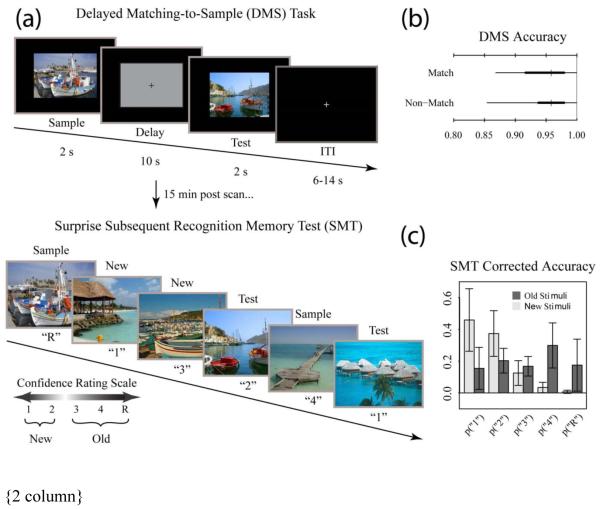Fig. 1.
Tasks and behavioral results. Recognition memory task adapted from Schon et al. (2004). (a) Participants were first shown a series of 144 randomized, trial unique but content similar outdoor scenes in the context of a delayed match to sample (DMS) working memory task during fMRI scanning. Approximately 15 min after completion of the fMRI scanning session, participants were administered a surprise subsequent memory test (SMT) where they were shown all 144 DMS images, plus 144 lure images, and asked to rate their recognition confidence. Participants were blind to the ratio of old to new images on the SMT. (b) Overall DMS task accuracy, separated by match and nonmatch trials. Ticks, thick lines, and thin lines show medians, 50% intervals, and 95% intervals, respectively. (c) SMT response distributions for old and lure stimuli, separated by confidence rating. Error bars show SD.

